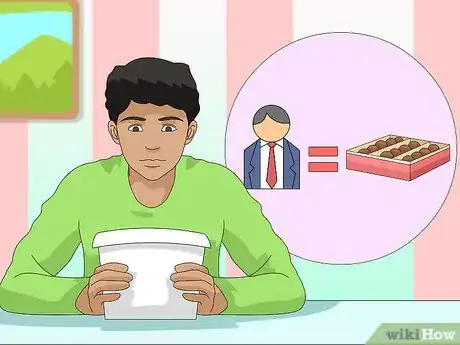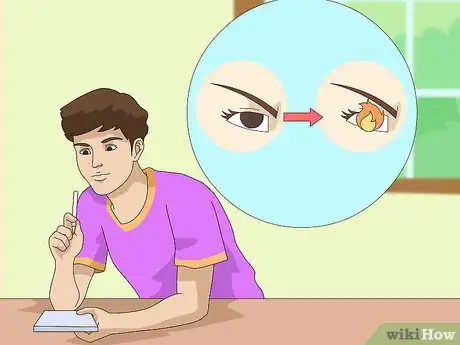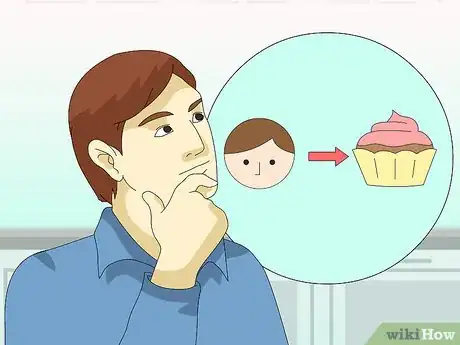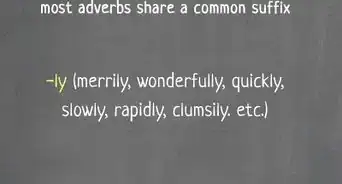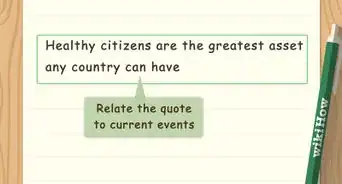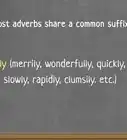This article was co-authored by Megan Morgan, PhD. Megan Morgan is a Graduate Program Academic Advisor in the School of Public & International Affairs at the University of Georgia. She earned her PhD in English from the University of Georgia in 2015.
There are 7 references cited in this article, which can be found at the bottom of the page.
This article has been viewed 46,786 times.
Metaphors are textual devices that pair two items that might not normally resemble one another.[1] For example, "life is a marathon" would be an example. Many authors use metaphors and other analogies to demonstrate their points more poetically.
Steps
Recognizing a Metaphor
-
1Note comparisons. A metaphor links two ideas through imagery or mental pictures. A metaphor is an analogy, which means it aims to describe an object by comparing it to another one.[2] Examples include:
-
2Look for "is" and "are" statements. Metaphors often say that one thing is something else.[6] Even though these two objects are not actually the same, the author makes a point by equating them. For example, if she writes, "Hope is the water of life," she means that just as we need water to survive, we also need hope. It is that essential. Other examples include:Advertisement
-
3Recognize different types of metaphors. Authors can use metaphors in many different ways. Although comparisons are often obvious, sometimes an author might use an entire paragraph or a whole story to draw a comparison. The following metaphors exist:
- Extended metaphors draw comparisons between objects over several sentences.[9]
- Implied metaphors relate one object to another object without mentioning the second object explicitly. For example, one might write: "Molly purred during her massage." In this case, Molly is being related to a cat.[10]
- Dead metaphors are comparisons that people use so often, they have lost their impact. For example, "it's raining cats and dogs" would be one.
-
4Know when a comparison is a simile. Similes are textual devices that compare objects directly. Unlike metaphors, similes always use the words "as" or "like." For example, "life is like a box of chocolates" is a simile. "She's slow as molasses" would be another one.
-
5Understand when to use a metaphor. People use metaphors to convey emotions and to say things in more creative and vivid ways. Metaphors ask readers to interpret their own meanings from a writer's words. Writers also can use metaphors to reduce the number of words they need to convey a message.[11]
- "Her eyes were on fire" shows deeper emotion than "She looked really mad."
- For example, instead of saying, "Mary ran very fast." One could say "Mary was a racehorse." The metaphor gives one a visual image that shows just how fast Mary ran.
- One could say, "her room was so messy, I could not see the floor." A metaphor could say the same thing more concisely: "her room was a pigsty."
Making Your Own Metaphors
-
1Form metaphors. When writing your own stories, think about what comparisons you can make between characters and other nouns. Examine each character separately. What are her qualities? How can you link her to perhaps an inanimate object or another living being? For example, to talk about how popular a classmate is, you could say, "Jane is the rockstar of her high school." Or, if you wanted to express that someone has a kind heart but a prickly demeanor, you could say "Deshawn's a cupcake wrapped in a pineapple."
- See Write a Metaphor for more tips.
- You can use metaphors to express emotions, be original in your writing, or to demonstrate your command of a language.
-
2Make metaphors from daily life. When comparing your life to another object, could you link it to one word? For example, maybe your life is a bit boring at present. Your life could be a peaceful lake. On the other hand, if you are experiencing turmoil, perhaps your life is a roller coaster.
-
3Form metaphors from art. If you examine an artwork, see if you can express a metaphor. For example, "the flames are anger" or "the blues are peace." Try to connect the colors, symbols, and expressions to tangible moods or objects. Sometimes, a piece of art might be drawing a contrast.
-
4Avoid dead metaphors. Metaphors are powerful when they can communicate surprise, delight, or some sort of unique meaning. Metaphors become "dead" when they have become so overused that they no longer pack a significant punch. For example, "hit the nail on the head" has become so frequently used that it no longer communicates the intensity of the comparison -- you may not even visualize a hammer and nail when you hear the phrase.[12]
References
- ↑ http://dictionary.reference.com/browse/metaphor
- ↑ http://www.literarydevices.com/analogy/
- ↑ http://www.literarydevices.com/metaphor/
- ↑ http://www.literarydevices.com/metaphor/
- ↑ http://www.literarydevices.com/metaphor/
- ↑ http://www.literarydevices.com/metaphor/
- ↑ http://www.literarydevices.com/metaphor/
- ↑ http://www.literarydevices.com/metaphor/
- ↑ http://literarydevices.net/extended-metaphor/



